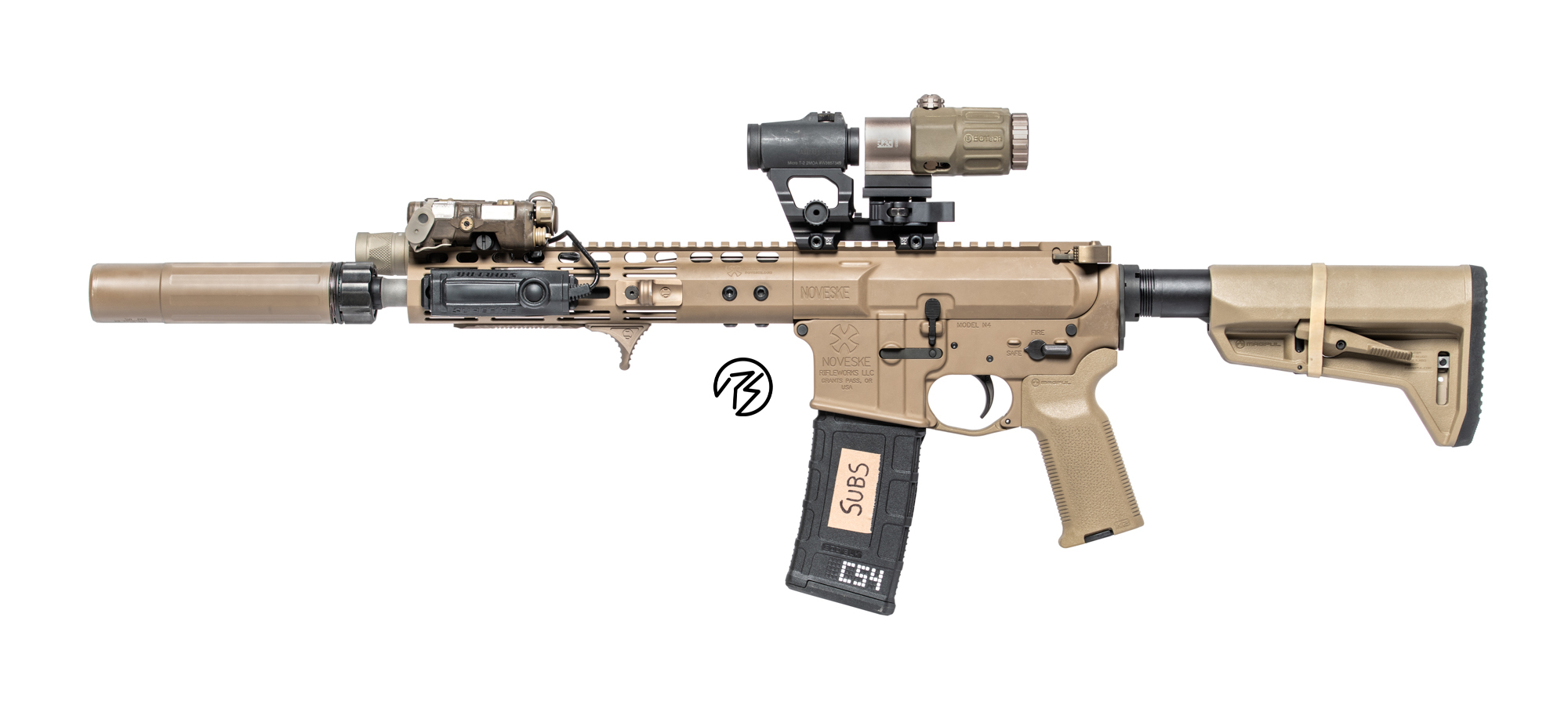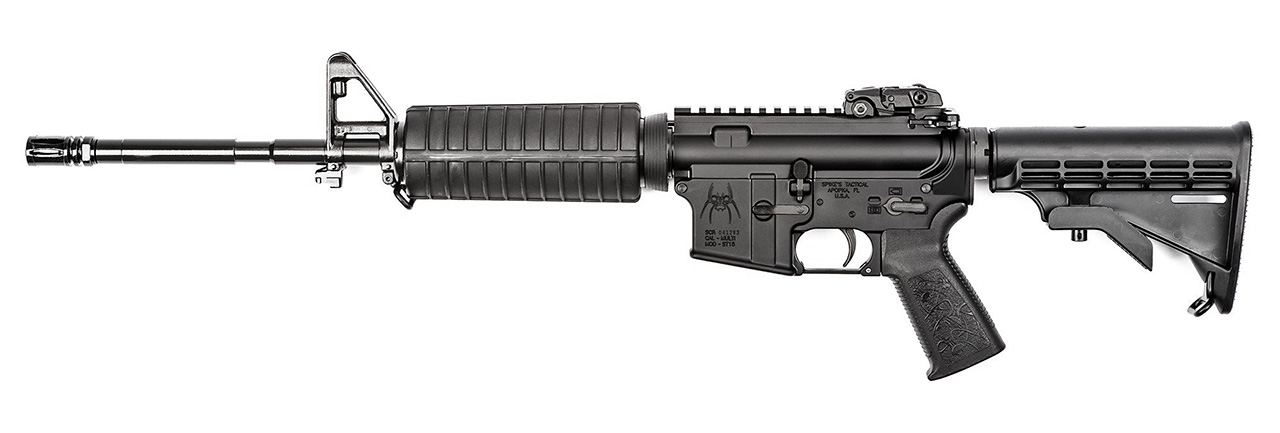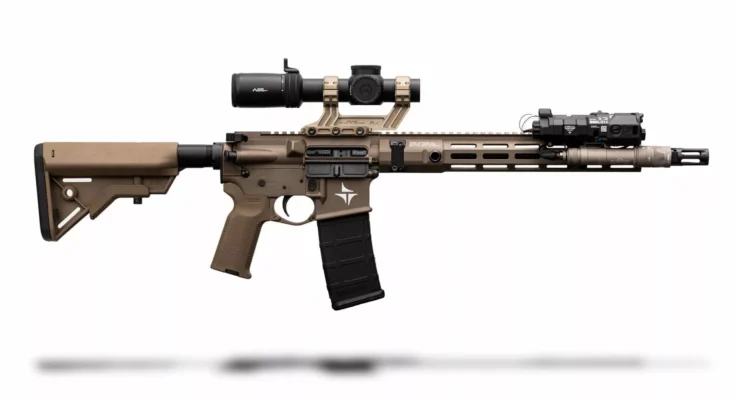A “Mil-Spec” AR-15 is built to military specifications set by the U.S. Department of Defense. These standards ensure compatibility and reliability.
The term “Mil-Spec” stands for military specification, indicating a set of standards for manufacturing. These standards ensure that parts and components are interchangeable among different manufacturers. This means you can mix and match parts from various brands without issues. Mil-Spec AR-15s are trusted for their reliability and durability in harsh conditions.
They are popular among enthusiasts for their performance and consistency. Choosing a Mil-Spec AR-15 can offer peace of mind, knowing it meets rigorous standards. This makes it a preferred choice for both military personnel and civilian shooters.

Credit: railscales.us
Introduction To Mil-spec Ar-15
The term Mil-Spec AR-15 is common among firearm enthusiasts. But what does it mean? A Mil-Spec AR-15 meets military specifications. This ensures quality, durability, and compatibility.
Definition And Origin
The term Mil-Spec stands for Military Specification. It refers to the standards set by the U.S. Department of Defense. These standards ensure the consistency and reliability of military equipment.
The AR-15 is a popular rifle. It originated from the military’s M16 rifle. The term “Mil-Spec AR-15” means that parts and assembly follow strict military guidelines.
Importance Of Mil-spec Standards
Mil-Spec standards are crucial for several reasons:
- Consistency: All Mil-Spec parts fit together perfectly.
- Durability: These standards ensure the rifle withstands harsh conditions.
- Reliability: A Mil-Spec AR-15 performs consistently in various situations.
- Compatibility: Parts from different manufacturers work together seamlessly.
These standards make the Mil-Spec AR-15 a dependable choice. It is trusted by military and civilian users alike.

Credit: www.wingtactical.com
Historical Background
The term “Mil-Spec” AR-15 often sparks curiosity among firearm enthusiasts. Understanding its historical background helps in grasping its significance and development.
Development Of The Ar-15
The AR-15 was designed in the late 1950s. Eugene Stoner, a talented engineer, created it. He worked for ArmaLite Corporation at the time. The rifle was intended for military use. It featured a lightweight design and modular structure.
The AR-15 used advanced materials like aluminum and plastics. This made it lighter than other rifles. It also had a direct impingement gas system. This system improved accuracy and reduced recoil. By 1959, ArmaLite sold the design to Colt’s Manufacturing Company.
Colt rebranded the rifle as the Colt AR-15. They aimed to market it to military forces worldwide. The design evolved over time, leading to various models.
Military Adoption
The U.S. military took interest in the AR-15. They saw its potential for modern warfare. In 1963, the U.S. Air Force adopted it as the M16 rifle.
The U.S. Army soon followed suit. The Army’s version had slight modifications. It became known as the M16A1. The M16A1 saw extensive use in the Vietnam War. It proved effective in combat. The rifle’s lightweight design and high rate of fire were advantageous.
Over the years, the AR-15 platform continued to evolve. It became the basis for many military rifles around the world. The term “Mil-Spec” refers to military specifications. These specifications ensure consistency and quality. They apply to the materials, construction, and performance of the rifle.
Today, the AR-15 is popular among civilians. Its modular design allows for customization. The Mil-Spec designation assures buyers of its reliability and performance.
Mil-spec Standards Explained
Understanding Mil-Spec standards for the AR-15 can be confusing. These standards ensure quality and consistency in firearms. They are used by the military to maintain high performance. Let’s dive into the specifics of these standards.
Material Specifications
The materials used in a Mil-Spec AR-15 are specific and strict. The barrel is made from 4150 chrome-moly-vanadium steel. This material provides strength and durability. The upper and lower receivers are often crafted from 7075-T6 aluminum. This aluminum is lightweight yet very strong.
- Barrel: 4150 chrome-moly-vanadium steel
- Receivers: 7075-T6 aluminum
Using these materials ensures the rifle can withstand heavy use. It also ensures that the rifle is reliable in various conditions.
Manufacturing Processes
The manufacturing processes of a Mil-Spec AR-15 are also very specific. The barrel is chrome-lined. This process adds a protective layer inside the barrel. It increases the barrel’s life and makes cleaning easier.
The bolt carrier group is magnetic particle inspected (MPI). This inspection checks for cracks or flaws in the metal. The gas key is staked to prevent it from coming loose during use.
- Chrome-lining the barrel
- Magnetic particle inspection of the bolt carrier group
- Staking the gas key
These processes ensure the reliability and durability of the AR-15. They help maintain the weapon’s performance over time.
Understanding these standards helps in choosing the right AR-15. It ensures that the rifle meets high-quality and performance standards.

Credit: railscales.us
Key Components
A Mil-Spec AR-15 has specific key components. These parts meet military specifications. Understanding these parts helps you know your rifle better.
Barrel And Receiver
The barrel and receiver are crucial parts. The barrel is the tube the bullet travels through. A Mil-Spec barrel usually has a chrome lining. This lining enhances durability and heat resistance.
The receiver is another critical part. It houses the bolt carrier group and other mechanisms. The lower receiver holds the trigger and magazine. The upper receiver holds the barrel and bolt carrier group. Together, they form the core of the rifle.
Bolt Carrier Group
The bolt carrier group (BCG) is vital for operation. It includes the bolt, carrier, gas key, and firing pin. The BCG cycles the rounds and ejects spent casings. A Mil-Spec BCG is made from high-quality materials like Carpenter 158 steel.
Proper staking of the gas key is essential. It prevents loosening during operation. The BCG also has chrome lining in the gas key and chamber area. This lining provides durability and reliability.
Comparing Mil-spec And Commercial Ar-15s
When choosing an AR-15, you often see terms like “Mil-Spec” and “Commercial.” Understanding these terms helps in making an informed decision. Let’s compare Mil-Spec and Commercial AR-15s to see their differences.
Differences In Construction
The construction of Mil-Spec AR-15s follows military standards. These rifles use high-quality materials and strict guidelines.
Below is a table showing the key construction differences:
| Feature | Mil-Spec AR-15 | Commercial AR-15 |
|---|---|---|
| Buffer Tube Diameter | 1.14 inches | 1.17 inches |
| Receiver Extension | 7075-T6 Aluminum | 6061-T6 Aluminum |
| Barrel Material | Chrome-lined | Varies |
Performance Variations
Performance between Mil-Spec and Commercial AR-15s can vary. Mil-Spec AR-15s often have better durability.
- Durability: Mil-Spec models withstand harsh conditions.
- Precision: Mil-Spec rifles offer consistent performance.
- Reliability: Mil-Spec AR-15s have fewer malfunctions.
Commercial AR-15s may offer more customization options.
They can be suitable for recreational shooting. It’s important to choose based on your specific needs.
Advantages Of Mil-spec Ar-15s
Choosing a Mil-Spec AR-15 offers numerous benefits. These rifles are built to military specifications. They ensure high performance and reliability. Let’s explore the key advantages.
Durability And Reliability
Mil-Spec AR-15s are known for their durability. They use high-quality materials. This makes them last longer. The rifles undergo strict testing. They can withstand harsh conditions. This ensures they perform well in any situation.
Reliability is another crucial factor. These rifles are designed to function flawlessly. They are less likely to jam or malfunction. This makes them a trusted choice for both professionals and enthusiasts.
Interchangeability Of Parts
One of the best features is the interchangeability of parts. You can easily swap parts between different Mil-Spec AR-15s. This makes repairs and upgrades simple. It also ensures you can find replacement parts easily.
Here’s a quick overview of some interchangeable parts:
| Part | Function |
|---|---|
| Barrel | Directs the bullet |
| Trigger | Fires the bullet |
| Stock | Stabilizes the rifle |
These features make Mil-Spec AR-15s a popular choice. They combine durability, reliability, and easy maintenance.
Challenges And Misconceptions
Understanding a “Mil-Spec” AR-15 can be tricky. Many people face challenges and misconceptions. It’s important to clear these up for better understanding.
Cost And Accessibility
Many believe a “Mil-Spec” AR-15 costs more. This is not always true. Mil-Spec parts can be affordable. You can find them in most gun stores. Accessibility is also misunderstood. Some think they need special access. But anyone can buy Mil-Spec parts with proper checks.
| Common Misconceptions | Reality |
|---|---|
| Mil-Spec AR-15s are expensive | They can be affordable |
| Only experts can buy Mil-Spec parts | Anyone can buy with proper checks |
Common Myths
There are many myths about the Mil-Spec AR-15. One myth is that Mil-Spec means better quality. This is not always true. Mil-Spec just means it meets military standards. Another myth is that only the military uses Mil-Spec AR-15s. Civilians can use them too.
- Myth: Mil-Spec means better quality.
- Fact: It means it meets military standards.
- Myth: Only the military uses Mil-Spec AR-15s.
- Fact: Civilians can use them too.
Understanding these challenges and misconceptions is key. It helps make informed decisions about AR-15s.
Choosing The Right Ar-15
Choosing the right AR-15 can be a complex decision. A crucial factor is understanding what “Mil-Spec” means. This guide will help you identify true Mil-Spec AR-15s and evaluate your needs.
Identifying True Mil-spec
A true Mil-Spec AR-15 adheres to military specifications. These specifications ensure consistency and quality. Look for the following key features:
- Receiver Material: Mil-Spec AR-15s use 7075-T6 aluminum.
- Barrel: Chrome-lined or nitride-treated steel barrels.
- Trigger: Single-stage trigger with a 5.5-8.5 lb pull.
- Buffer Tube: Mil-Spec buffer tubes are 1.14 inches in diameter.
Check the manufacturer’s specifications to ensure these standards are met. Not all AR-15s labeled “Mil-Spec” meet true military standards. Verify before purchasing.
Evaluating Your Needs
Frequently Asked Questions
What Does “mil-spec” Mean For Ar-15?
“Mil-Spec” stands for Military Specification. It ensures the AR-15 meets standardized military requirements. This includes dimensions, materials, and performance.
Are Mil-spec Ar-15s Reliable?
Yes, Mil-Spec AR-15s are reliable. They follow strict military standards, ensuring durability and consistent performance under various conditions.
How Is Mil-spec Ar-15 Different?
Mil-Spec AR-15s differ in build quality. They use specific materials and dimensions, ensuring compatibility and reliability with military-grade parts.
Can Civilians Buy Mil-spec Ar-15s?
Yes, civilians can buy Mil-Spec AR-15s. Many manufacturers offer Mil-Spec models designed for civilian use.
Conclusion
A Mil-Spec AR-15 offers reliability and durability. It’s built to military standards. This ensures high performance. Understanding Mil-Spec helps make informed decisions. Whether for sport or defense, a Mil-Spec AR-15 is a solid choice. Choose quality and enjoy a dependable firearm.



